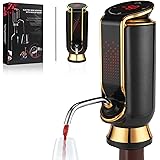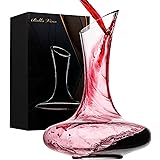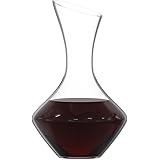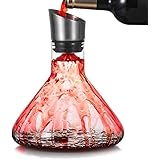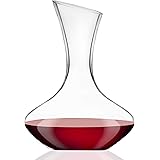Mastering Red Wine Pairing: A Deep Dive into Culinary Harmony
Did you know that over 60% of consumers find red wine pairing more challenging than white wine? This statistic highlights a common dilemma for many wine enthusiasts and home cooks. The complexities of red wines, with their varying levels of tannin, acidity, and body, can indeed make finding the perfect culinary partner feel like a sophisticated puzzle. Fortunately, mastering the art of red wine pairing is entirely achievable with a few fundamental principles and a deeper understanding of different wine styles.
The accompanying video provides an excellent introduction to these principles, discussing the distinct characteristics of red wines that influence pairing success. This article expands upon those foundational ideas, offering an in-depth exploration of how to harmoniously blend red wines with an array of dishes, moving beyond mere theory to practical application. We’ll explore why red wines, despite their perceived difficulty, offer some of the most rewarding food combinations.
Decoding the Red Wine Pairing Puzzle
While white wines often boast higher acidity, which acts as a natural palate cleanser and makes them remarkably versatile, red wines present a unique set of characteristics. Their inherent richness, elevated alcohol content, fuller body, and especially their tannin levels, can easily overpower delicate flavors. This is precisely why a thoughtful approach to red wine food pairing becomes crucial.
However, this perceived difficulty is also where the magic lies. The structural components of red wines can elevate a dish, creating a synergistic effect where both the food and the wine taste better together. The key is to understand these components and how they interact with different foods.
Key Principles for Pairing Red Wines
Successful pairing red wine hinges on a few core principles that guide your choices. These aren’t rigid rules but rather flexible guidelines designed to enhance your dining experience.
First, consider the **weight of the dish versus the weight of the wine**. Just as a heavyweight boxer would easily overpower a featherweight opponent, a full-bodied red wine can obliterate a light, delicate dish. The “weight” of a dish is largely determined by its richness, the intensity of its sauces, and its preparation method. For instance, a poached chicken breast is light, while grilled barbecue chicken is considerably heavier. For wines, alcohol content is a reliable indicator of body: red wines typically range from 12% to 15.5% alcohol, with lower percentages generally indicating a lighter body. Always check the label, as alcohol by volume (ABV) is legally required to be listed.
Second, learn to **pair tannin and fat**. Tannin, a natural compound found predominantly in red wines (derived from grape skins, seeds, and oak barrels), creates that characteristic drying, sometimes puckering sensation in your mouth. Think of it as sandpaper for your palate. When tannin meets fat, it’s like a scientific marvel. The fat in food softens the wine’s astringency, making it feel smoother and less bitter, while the tannin cleanses the palate, preparing it for the next bite. This is the bedrock of classic pairings like a bold Cabernet Sauvignon with a rich, fatty ribeye steak.
Third, aim to **match or contrast flavors and textures**. Matching flavors involves finding shared aromatic notes between the wine and the food. A Syrah, for example, often exhibits peppery notes, making it an ideal match for peppery smoked meats. Conversely, contrasting flavors can create dynamic tension and excitement. The acidity of a lighter red wine can cut through the richness of a fatty dish, providing a refreshing counterpoint. Think of it like contrasting colors in art; they bring out the best in each other.
Exploring Red Wine Styles and Their Ideal Food Companions
With these principles in mind, let’s categorize red wines into three main styles—light, medium, and full-bodied—and explore their gastronomic affinities. This framework simplifies the daunting task of wine and food pairing, providing a clear path to delicious combinations.
Light-Bodied Reds: The Versatile Performers
These elegant reds are often characterized by their higher acidity, lower alcohol (typically 13.5% ABV or less), and minimal tannin. These attributes make them incredibly versatile, capable of complementing a wide spectrum of dishes. The best examples often hail from cooler climates, where grapes ripen more slowly, preserving acidity and producing lighter-bodied wines.
- Key Varietals: Pinot Noir (especially from Burgundy, Santa Barbara, New Zealand), Gamay (Beaujolais), Frappato, Zweigelt, Cinsault, Lambrusco, Blaufränkisch, lighter Grenache, St. Laurent.
- Why They Work: Their refreshing acidity cleanses the palate effectively, and their delicate structure means they won’t overwhelm subtler flavors. They often possess earthy, fruity, and sometimes floral notes.
-
Perfect Pairings:
- Cheeses: Soft, creamy cheeses like Brie and Camembert, or nutty, semi-hard cheeses such as Gruyère and Comté.
- Fish: Hearty, fatty fish like grilled salmon, tuna, or mackerel. The wine’s acidity balances the fish’s richness beautifully.
- White Meats: Roast chicken, pork chops (especially with a cherry or berry sauce), duck breast. Even lean cuts of red meat like fillet mignon or lamb tenderloin can work.
- Vegetables: Earthy mushrooms (risotto, pasta, roasted), alliums (French onion soup, leek tart), root vegetables.
- Other Dishes: Mildly spiced Asian dishes, tomato-based curries, anything with berry reduction sauces, grilled or sautéed vegetables. Pinot Noir is a classic for Thanksgiving dinner due to its ability to handle a diverse spread.
Medium-Bodied Reds: The All-Rounders
Stepping up in intensity, medium-bodied reds offer a balance of acidity, fruit, and moderate tannin. They possess more structure than their lighter counterparts but still retain a degree of freshness, making them excellent choices for a broader range of robust dishes. These wines often exhibit more savory or spicy notes alongside fruit.
- Key Varietals: Sangiovese (Chianti, Brunello di Montalcino), Red Bordeaux blends (Merlot, Cabernet Franc dominant), Rioja, Barbera, lighter Syrah/Rhône blends, Mencía, Merlot, light Zinfandel, Langhe Nebbiolo, richer Pinot Noir.
- Why They Work: Their balanced structure allows them to stand up to more flavorful foods without being overbearing. They offer good acidity for cleansing and enough tannin for richer dishes.
-
Perfect Pairings:
- Cheeses: Aged cheddar, Gouda, salty hard cheeses like Parmesan and aged Manchego.
- Meat: Grilled barbecue chicken, spiced sausages (grilled or in pasta), pulled pork, burgers. These are quintessential barbecue and summer cookout wines.
- Pasta & Pizza: Tomato-based sauces are a natural fit (red sauce pasta, pizza, eggplant parmesan). The acidity in the wine mirrors the acidity in the tomatoes.
- Legumes & Vegetables: Bean-based chili, lentils, and mushrooms continue to be excellent choices.
- Other Dishes: Korean barbecue, barbacoa tacos, Mediterranean cuisine.
Full-Bodied Reds: The Bold Companions
These are the powerhouse reds—rich, intense, often high in alcohol, and typically laden with significant tannins. While immensely popular, their assertive character requires equally robust dishes to maintain balance. Delicate foods, spicy flavors, and fish are generally best avoided, as their interaction with high tannin can be jarring.
- Key Varietals: California Cabernet Sauvignon, Australian Shiraz/Syrah, Portuguese reds, Petit Sirah, big Zinfandels/Primitivo, Tannat, Petit Verdot, Aglianico, Pinotage, Malbec, Mourvèdre, big GSM (Grenache-Syrah-Mourvèdre) blends, Barolo, Barbaresco.
- Why They Work: Their formidable structure, particularly the high tannin content, acts as a foil for rich, fatty, and intensely flavored foods. The fat in the food mutes the tannin’s astringency, creating a smoother mouthfeel.
-
Perfect Pairings:
- Cheeses: Smoked and hard aged cheeses (e.g., aged Gouda, smoked cheddar, Parmesan).
- Meats: This is where full-bodied reds truly shine. Fatty cuts of beef (ribeye, porterhouse), game meats (venison, boar, duck), lamb. The intense flavors and richness of these meats stand up to the wine’s concentration.
- Hearty Stews & Roasts: Beef bourguignon, beef stews, braised short ribs, pot roasts. The slow-cooked, rich flavors are perfectly complemented by these wines.
- Vegetables: Beans and mushrooms can still work, especially when prepared in rich, savory ways (e.g., mushroom Wellington, cassoulet).
- General Rule: Always pair full-bodied reds with intense, rich, heavy dishes. Think of the wine as a powerful orchestral accompaniment that needs an equally strong lead instrument to create a harmonious symphony.
Ultimately, the goal of any red wine pairing adventure is enjoyment and discovery. The video above, alongside these expanded insights, provides a robust foundation for your culinary explorations. Don’t hesitate to experiment and trust your palate. You might uncover your own perfect red wine food pairing that defies conventional wisdom. Keep exploring and enjoying the delightful journey of wine and food.


